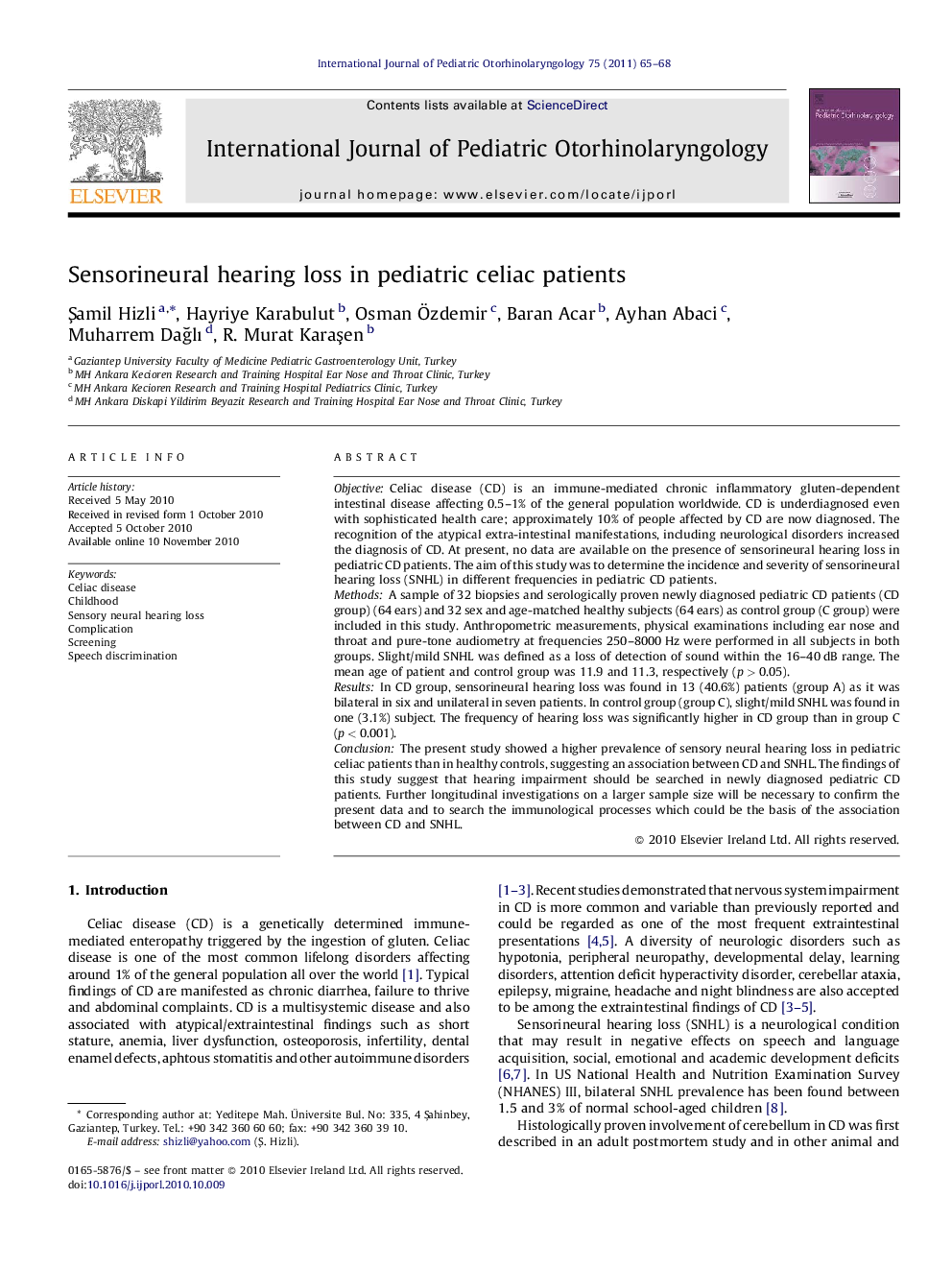| Article ID | Journal | Published Year | Pages | File Type |
|---|---|---|---|---|
| 4113437 | International Journal of Pediatric Otorhinolaryngology | 2011 | 4 Pages |
ObjectiveCeliac disease (CD) is an immune-mediated chronic inflammatory gluten-dependent intestinal disease affecting 0.5–1% of the general population worldwide. CD is underdiagnosed even with sophisticated health care; approximately 10% of people affected by CD are now diagnosed. The recognition of the atypical extra-intestinal manifestations, including neurological disorders increased the diagnosis of CD. At present, no data are available on the presence of sensorineural hearing loss in pediatric CD patients. The aim of this study was to determine the incidence and severity of sensorineural hearing loss (SNHL) in different frequencies in pediatric CD patients.MethodsA sample of 32 biopsies and serologically proven newly diagnosed pediatric CD patients (CD group) (64 ears) and 32 sex and age-matched healthy subjects (64 ears) as control group (C group) were included in this study. Anthropometric measurements, physical examinations including ear nose and throat and pure-tone audiometry at frequencies 250–8000 Hz were performed in all subjects in both groups. Slight/mild SNHL was defined as a loss of detection of sound within the 16–40 dB range. The mean age of patient and control group was 11.9 and 11.3, respectively (p > 0.05).ResultsIn CD group, sensorineural hearing loss was found in 13 (40.6%) patients (group A) as it was bilateral in six and unilateral in seven patients. In control group (group C), slight/mild SNHL was found in one (3.1%) subject. The frequency of hearing loss was significantly higher in CD group than in group C (p < 0.001).ConclusionThe present study showed a higher prevalence of sensory neural hearing loss in pediatric celiac patients than in healthy controls, suggesting an association between CD and SNHL. The findings of this study suggest that hearing impairment should be searched in newly diagnosed pediatric CD patients. Further longitudinal investigations on a larger sample size will be necessary to confirm the present data and to search the immunological processes which could be the basis of the association between CD and SNHL.
